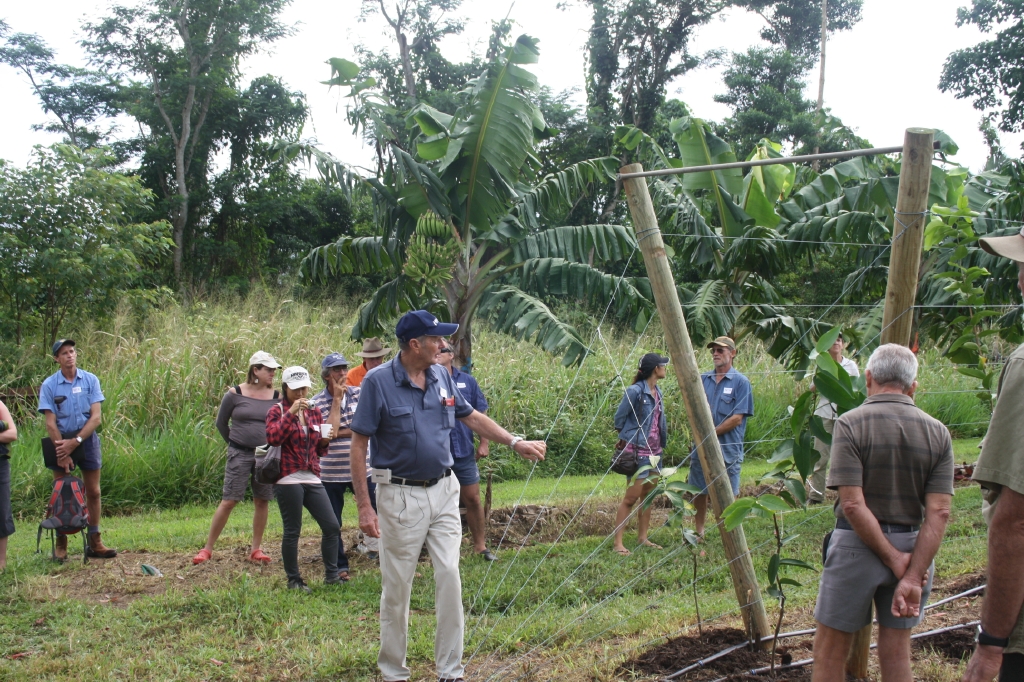While the fruit industry in Victoria is in the doldrums, the exotic tropical fruits industry in far north Queensland, after experiencing two destructive cyclones in five years, is bouncing back, thanks to the Tatura Trellis.
 Growers of exotic tropical fruits are discovering that the Tatura system of growing fruit has the potential of becoming the cornerstone of a sustainable industry.
Growers of exotic tropical fruits are discovering that the Tatura system of growing fruit has the potential of becoming the cornerstone of a sustainable industry.
When cyclone Larry struck the north Queensland coastal area in 2006, one pioneering family in the Tully area decided to do something that no one else has done before—replant using the Open Tatura system.
Except for their neighbour, no one believed that it was possible to plant tropical fruit trees like rambutan, soursop, custard apple and many other species—which normally turn into large trees—at high density, train the trees on a trellis and produce early and high yields of good quality fruit.
It was also believed that using the expensive Tatura Trellis in a cyclone-prone region was a crazy idea.
When Yasi, the most destructive cyclone in living memory, struck the region five years after cyclone Larry, it destroyed everything in its wake but the trellised trees.
The industry started to take notice when six months later, fruit was harvested from the trellised trees creating early cash flow and a quick recovery, while everyone else was still cleaning up their orchards.
What is even more amazing, a sample of the soursops from the trellised trees was awarded champion exhibit of show 2011 at the Tully & District Show Society.
Two field days in the last 10 months followed with written information handed out to explain the intricacies of the Tatura Trellis.
The local media and TV are also spreading the good news.
Now plantings of Open Tatura are springing up from Tully to Cape Tribulation. Even the Feluga Primary School near Tully, has a row of trellised trees.
In developing sustainable domestic and export markets, fruit growers in far north Queensland can build on almost forty years of research and experience with the Tatura system.
We are in the process of modifying some of the Tatura Trellis techniques to suit the climate in far north Queensland and the growth and fruiting habits of the many tropical fruits and nuts, including cacao.
I believe that after years of battling the vagaries of the weather, fruit growers in far north Queensland have, for the first time, a bright and secure future.
For photos of the trellis and crops, see the September 2012 issue of Tree Fruit.





















